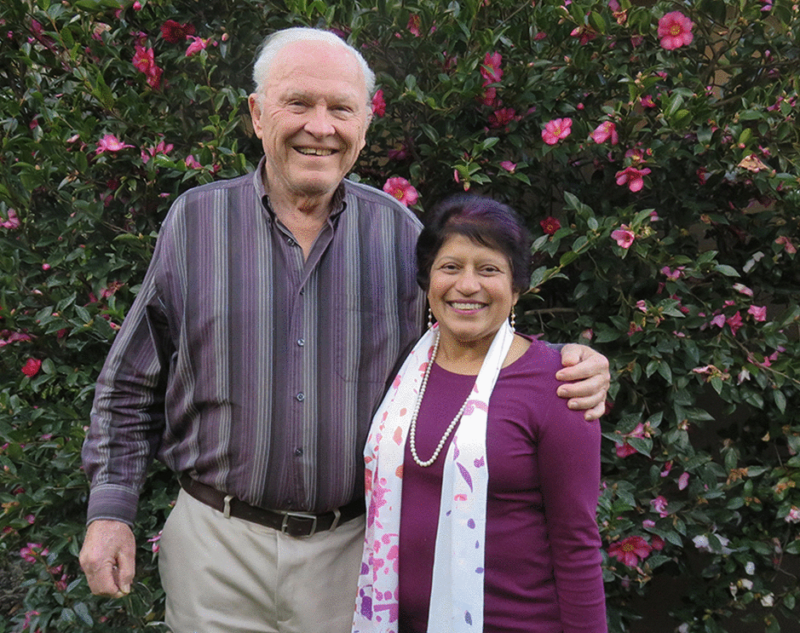A history of Pseudomonas aeruginosa PA14
Posted on August 6, 2018 by Laura Cox
This month, the first paper describing Pseudomonas aeruginosa UCBPP-PA14 has been re-printed in the Journal of Medical Microbiology. Pseudomonas aeruginosa UCBPP-PA14 is a unique strain. It can cause severe disease in both plants and animals. Because of this, it is becoming increasingly popular in pathogenesis research.
In 2007, Kalai Mathee began a quest to find out where this strain came from and when it was first described. In her editorial published alongside the original article, Professor Mathee describes the history of the strain and what she learned when she met with some of the pioneers of interdisciplinary research.

- Professor Milton Scroth, the first scientist to report
P. aeruginosa PA14, and Professor Kalai Mathee
In her editorial, Professor Mathee says that P. aeruginosa PA14 has been mentioned in over 11,200 publications since 1977. Here are three of our favourites:
Growing in zero-gravity
Scientists investigating how bacteria behave in space found that P. aeruginosa PA14 grows better in low-gravity conditions than on Earth.
The research, carried out on the space shuttle Atlantis, found that colonies grew just as fast in space, even when starved of nutrients.
Evolution in action
In 2013, Joao B. Xavier used P. aeruginosa PA14 to demonstrate convergent evolution. After repeated seeding, the bacteria grew extra flagella and became more motile – as shown in the video below.
Video credit: Dave van Ditmarsch, Kerry E. Boyle, Hassan Sakhtah, Jennifer E. Oyler, Carey D. Nadell, Eric Deziel, Lars E.P. Dietrich, and Joao B. Xavier.
But the extra flagella came with a price: impaired biofilm formation. Biofilms are what make Pseudomonas infections so difficult to treat. Researchers are now looking for a way to force the bacteria to make this trade-off.
Investigating cystic fibrosis
P. aeruginosa is a major cause of chronic infection in cystic fibrosis patients. This research group developed a new way to investigate formation of P. aeruginosa PA14 biofilms as described in the video below.

